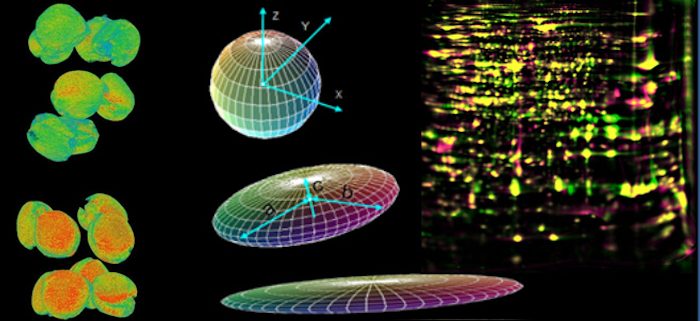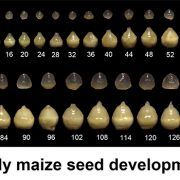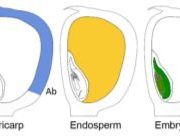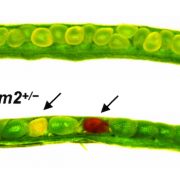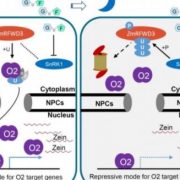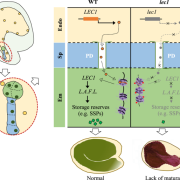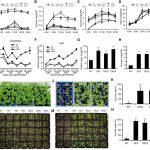Cellular plasticity in protein re-balancing
Rolletschek et al. examine the role of cellular plasticity in oil-protein balancing.
Plant Cell https://doi.org/10.1105/tpc.19.00879
By Hardy Rolletschek and Ljudmilla Borisjuk
Leibniz Inst Plant Genet & Crop Plant Res (IPK)
Gatersleben, Germany
Background: Seeds of some crops like canola/rapeseed are capable of accumulating storage oils and proteins—both of which are valuable products used for human food, animal feed, and industrial purposes. As noted by breeders, the oil content of the mature seed tends to be negatively associated with that of protein, indicating some mechanisms regulating their balance. It has been suggested that this competition might be manipulated by redirecting substrate from protein to lipid synthesis (or vice versa), but little success has been achieved in implementing this strategy.
Question: What is behind the oil-protein balancing? Does the suppression of protein necessarily lead to the redirection of assimilate to an alternative class of storage compounds in oilseed rapeseed?
Findings: Here we generated plants in which the synthesis of the two dominant storage protein classes (napin and cruciferin) is suppressed by RNAi in seed, and demonstrated that embryos of transgenic plants were unable to generate large protein-filled vacuoles in their storage cells. This was balanced, at least in part, by an increased synthesis of the membrane protein oleosin. The shift from vacuolar to membrane storage altered the intracellular architecture of cells, evidenced by the formation of large, oleosin-containing membrane stacks. While the overall visible seed phenotype appeared to be unaffected by this adjustment in the proteome, a detailed -omics and in vivo analysis encountered a number of unexpected findings, revealing a remarkable level of plasticity in the architecture and metabolism of the plant cell.
Next steps: The outcome of this study suggests a homeostatic organellar mechanism in seeds that maintains the appropriate storage of carbon and nitrogen reserves for seed viability. Its mechanistic basis remains to be determined.
Hardy Rolletschek, Jörg Schwender, Christina König, Kent D. Chapman, Trevor Romsdahl, Christin Lorenz, Hans-Peter Braun, Peter Denolf, Katrien Van Audenhove, Eberhard Munz, Nicolas Heinzel, Stefan Ortleb, Twan Rutten, Sean McCorkle, Taras Borysyuk, André Guendel, Hai Shi, Michiel Vander Auwermeulen, Stephane Bourot, Ljudmilla Borisjuk. (2020). Cellular Plasticity in Response to Suppression of Storage Proteins in the Brassica napus Embryo. Plant Cell; DOI: https://doi.org/10.1105/tpc.19.00879


